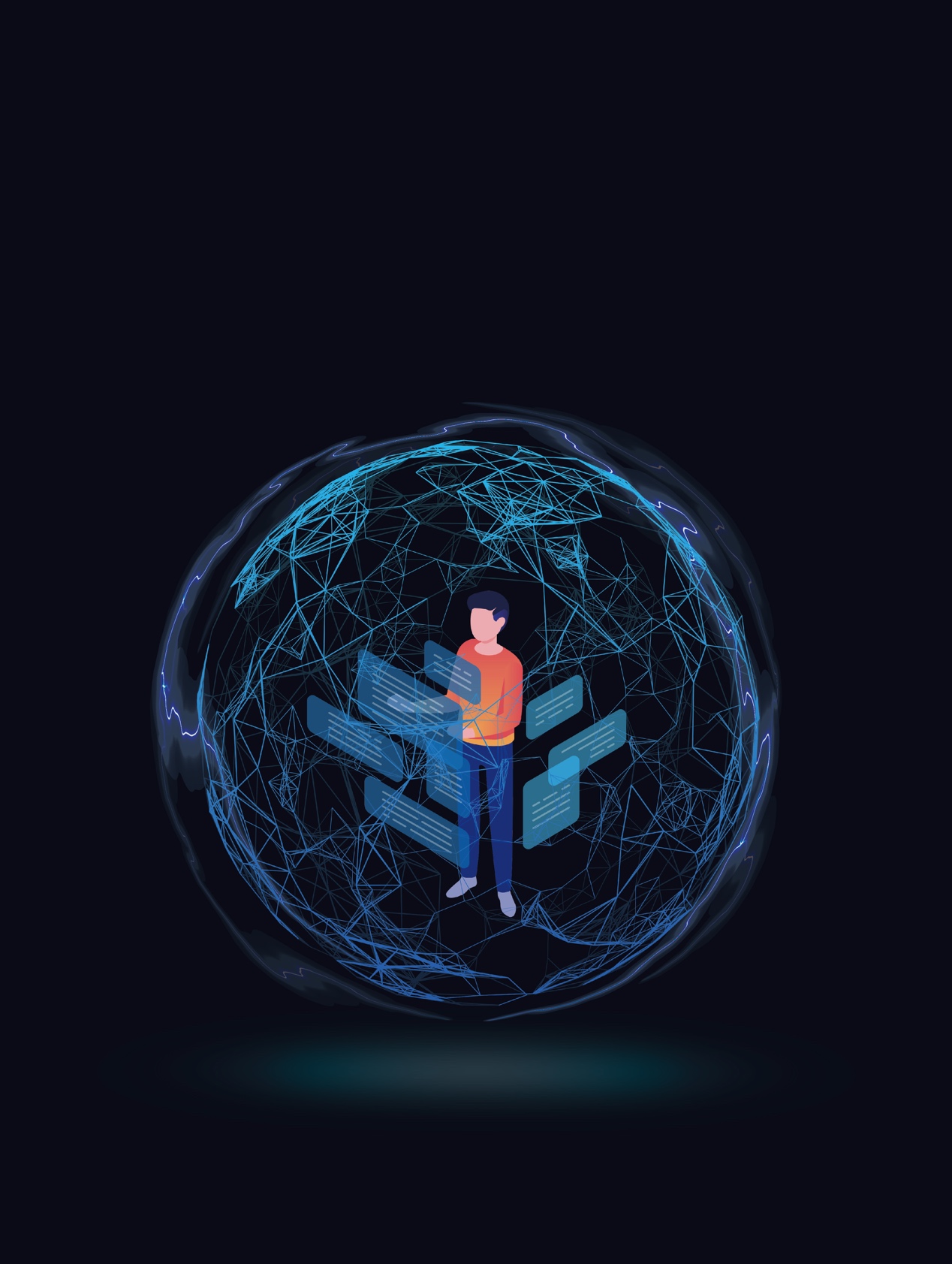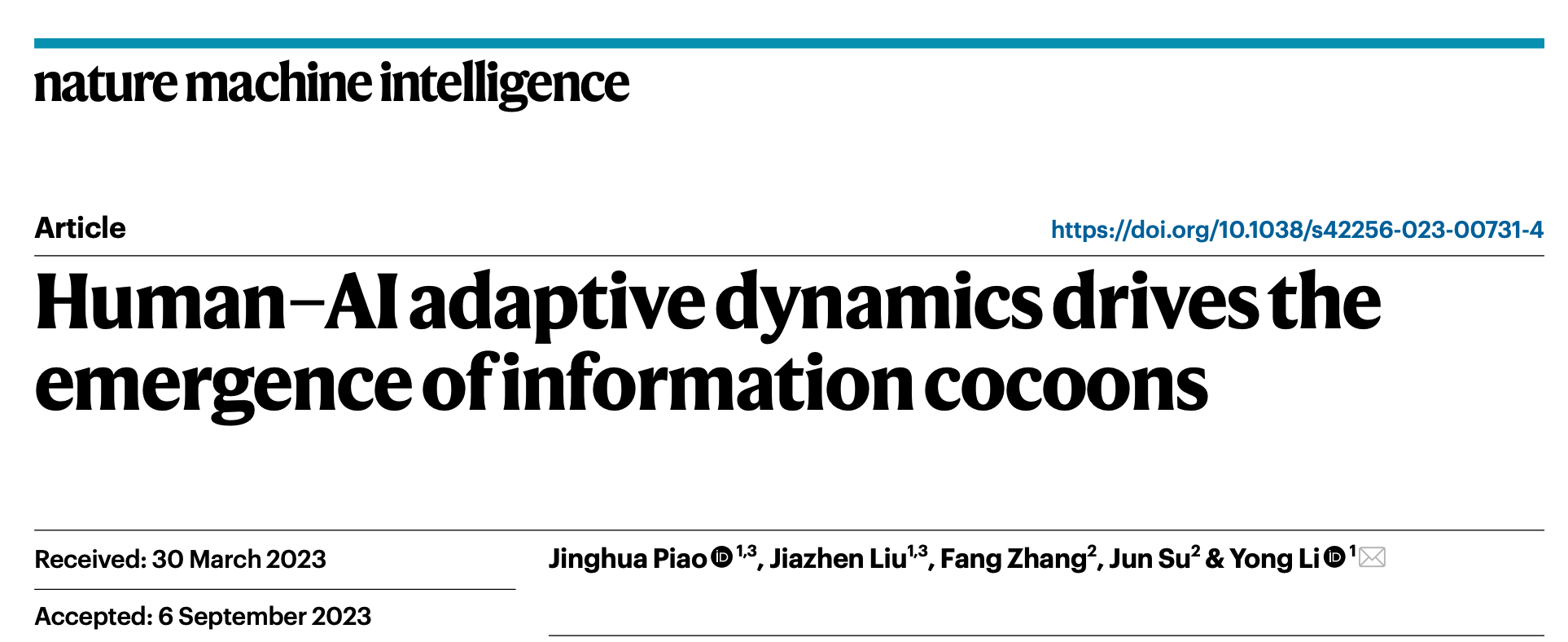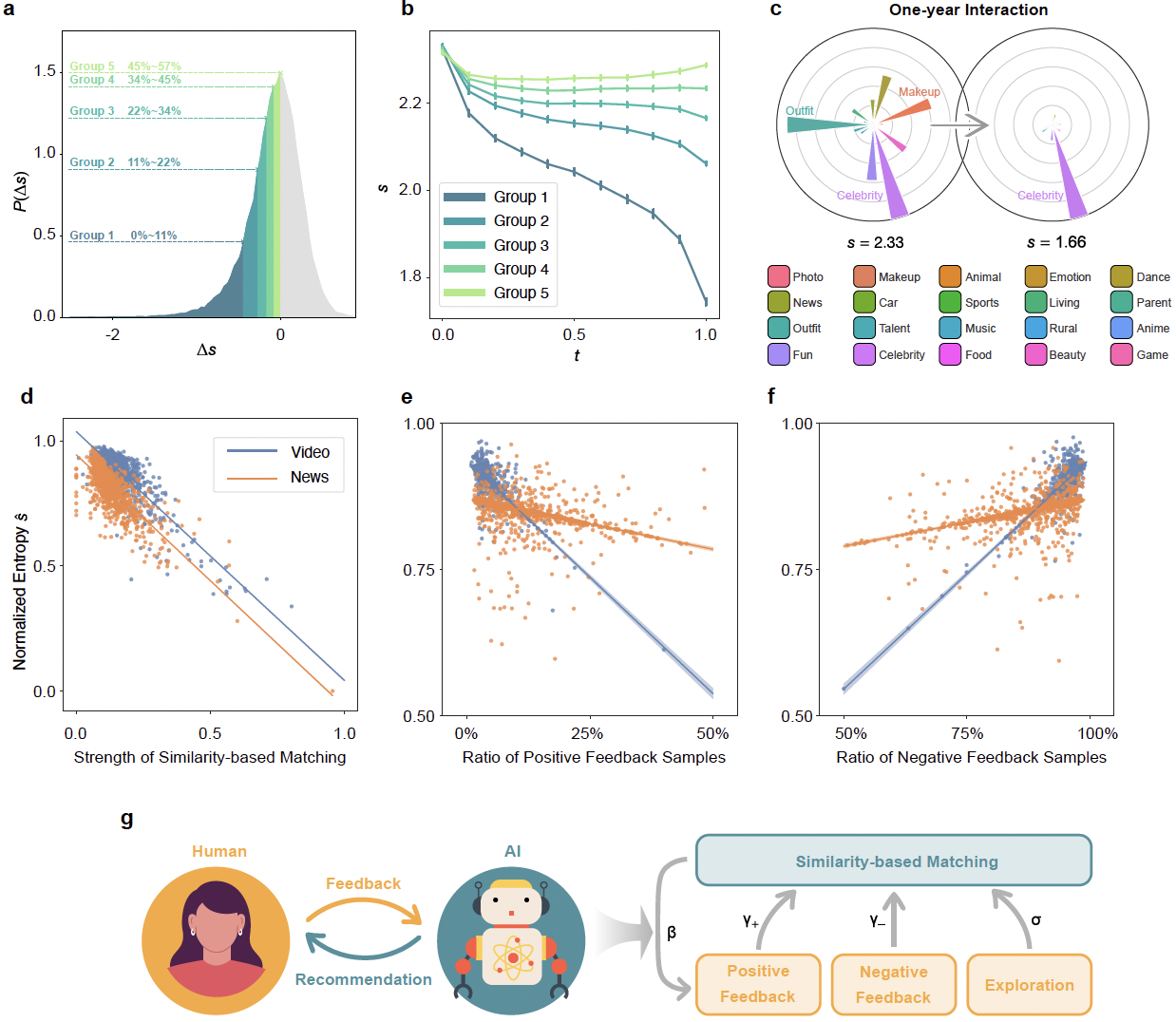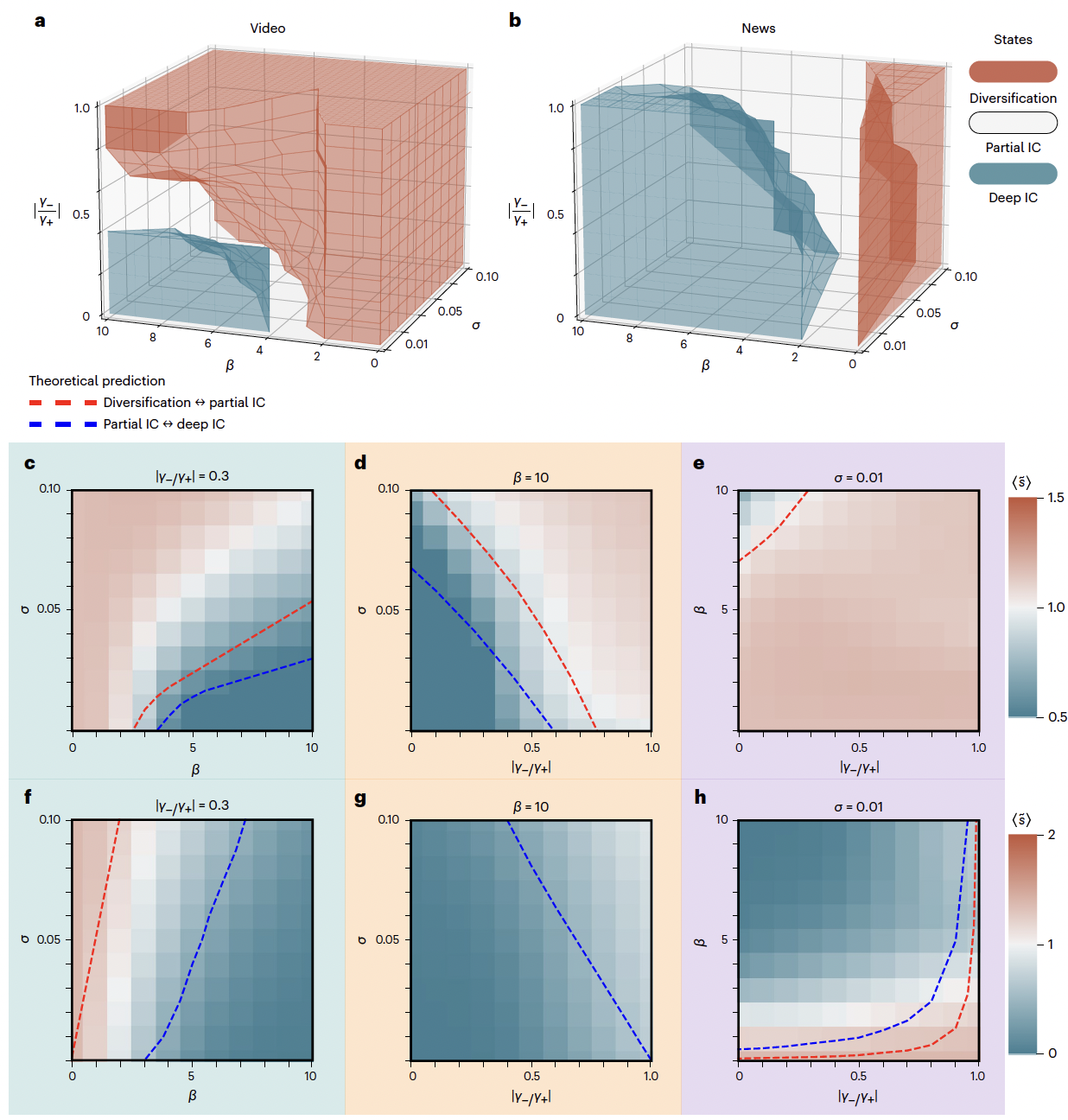
Tsinghua University’s Department of Electronic Engineering has recently collaborated with the School of Public Policy and Management to reach a milestone in the field of complex socio-technical systems. Through large-scale empirical research and theoretical modeling of information dynamics, this work is the first to reveal the underlying mechanisms behind the emergence of information cocoons in online media. This work offers a novel perspective on understanding the complex socio-technical systems of human-AI interactions in today's intelligent society. This work has been published online in Nature Machine Intelligence under the title "Human–AI adaptive dynamics drives the emergence of information cocoons".

The rapid development of next-generation information and intelligent technologies is driving humans towards an intelligent society. Empowered by digital technology and recommendation algorithms, platforms are becoming more user-centric, consistently providing content with users’ personalized preferences and needs. However, the precision of recommendations has given rise to the phenomenon of the "information cocoons" where like-minded groups gather, and specific opinions within these groups amplify, gradually leading to extreme ones. Each extreme opinion regarding celebrities or societal events can be harnessed as a tool for ideological infiltration, fueling public sentiment in both the online space and the real world. Nevertheless, despite these concerns, our understanding of information cocoons remains limited: How severe is the phenomenon of information cocoons in real-world online systems? There is a lack of large-scale empirical research. What are the mechanisms behind it? There is a lack of theoretical framework. How can we address it? Effective solutions are still lacking.
The Center for Urban Science and Computation Research at the Department of Electronic Engineering, Tsinghua University, commenced the research on governance, planning, and decision-making in complex intelligent society in 2014. Led by Professor Yong Li of the Research Center, the group's doctoral student Jinghua and postdoctoral researcher Jiazhen Liu, based on the group's technical accumulation in intelligent society and complex systems, and in cooperation with Professor Jun Su's team of School of Public Policy and Management, they reveal the underly mechanisms behind the emergence of information cocoons. This work focuses on two typical scenarios: news and video content. By analyzing the behavioral data of 570 million users and using information entropy to measure the severity of information cocoons, this work reveals that after one year of interactions, more than 57% of active users have experienced varying degrees of decreased information entropy. This signifies the severity of information cocoons within real-world systems. Building upon these empirical findings, the work proposes an adaptive information dynamics model to model the critical feedback loops between humans and recommendation algorithms. It characterizes the state transition process of information cocoons through the evolution of system information entropy. From the perspective of non-equilibrium statistical physics, this model predicts critical transitions between three states: diversification, partial information cocoons, and deep information cocoons. This work provides a theoretical method for understanding major social issues resulting from adaptive information dynamics in complex human–AI interaction systems.

(a-c) Focusing on news and video scenarios, they quantify the severity of real-world information cocoons. (d-f) Similarity-based matching and positive/negative feedback are important factors in the formation of information cocoons. (g) Overview of Adaptive Information Dynamics Model.

State Transitions, (a-b) Three-dimensional state diagrams in simulations initialized by the video and news datasets. (c-e) Cross-sections of three-dimensional diagrams of simulations initialized by the video dataset. (f-h) Cross-sections of three-dimensional diagrams of simulations initialized by the news dataset.
Author: Doctoral student Jinghua Piao, Postdoctoral researcher Jiazhen Liu, and Professor Yong Li from the Center for Urban Science and Computation Research at Department of Electronic Engineering, Tsinghua University, are lead authors and corresponding author of this paper, respectively. Professor Fang Zhang and Professor Jun Su at School of Public Policy and Management co-authored this paper. This work was supported in part by the National Key Research and Development Program of China under grant 2020AAA0106000 to Yong Li, the National Natural Science Foundation of China under grants 72104126 to Fang Zhang, 71721002 to Jun Su, U1936217 and U22B2057 to Yong Li.
For more information, visit:
https://www.nature.com/articles/s42256-023-00731-4
Editor: Li Han

